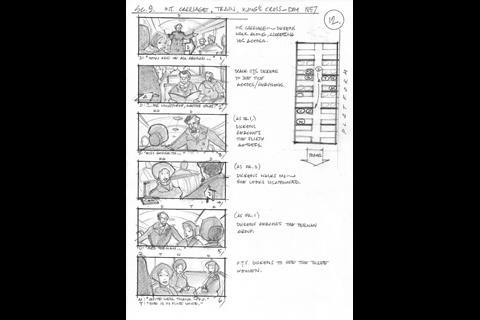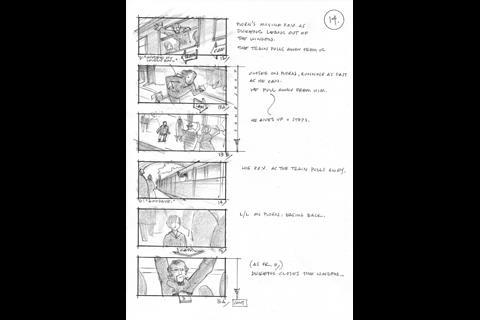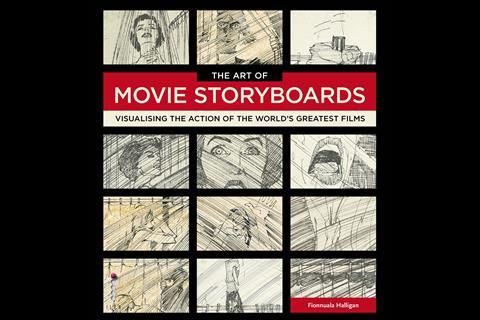In this excerpt from The Art of Movie Storyboards, Ralph Fiennes and storyboard artist Temple Clark collaborate on the historical drama.
Screen International contributing editor Fionnuala Halligan’s latest book, The Art Of Movie Storyboards, is out now from Ilex Press (more info here).
The book showcases a large collection of storyboards in a range of styles, and including some of cinema’s greatest moments.
The book includes the work of pioneers such as William Cameron Menzies (Gone with the Wind) and Saul Bass (Psycho, Spartacus), as well as contemporaries such as Raúl Monge (Pan’s Labyrinth) and Jane Clark (Harry Potter and the Goblet of Fire).
The storyboards, many of which weren’t seen before, are accompanied by insights from directors and storyboard artists.
Here is an excerpt from the book about Ralph Fiennes’ new Dickens drama The Invisible Woman.
THE INVISIBLE WOMAN
British storyboard artist Temple Clark worked with Ralph Fiennes on the actor’s arresting directorial debut Coriolanus in 2011 and they came together again in the early stages of Fiennes’s next film as director, The Invisible Woman.
Set in Britain in the mid-nineteenth century, this period drama is based on the book of the same name by Claire Tomalin and focuses on the novelist Charles Dickens (Fiennes) and his lengthy affair with 18-year-old actress Nelly Ternan (Felicity Jones). The affair took place at the height of Dickens’s fame as a writer when he was forty-five, more than twice Ternan’s age, prompting him to abandon his wife Catherine and their ten children.
Clark worked closely with Fiennes, himself an artist (he studied at the Chelsea College of Art), with Fiennes providing preliminary boards. They first locked down the overall mood of the film with some concept storyboards before moving on to the more defined panels seen on these pages.
As a storyboard artist, Temple Clark has been most inspired by the work of Sherman Labby on Blade Runner (1982), and found a more personal mentor in the British artist Jane Clark, whose boards for Harry Potter and the Goblet of Fire feature in the book.
Starting out after art school on pop videos and record sleeves, he has designed storyboards across multiple genres, from the stately Elizabeth (1998) to the action of Entrapment (1999), from extravagant family features like The Golden Compass (2007) to the epic science fiction of Alfonso Cuarón’s Gravity (2013).

Here, Charles Dickens is seen at Kings Cross railway station in 1857, leaving his wife and youngest son (nicknamed “Plorn”) on the platform. It’s a happy scene, with young Plorn taking a marble from his father.
Scene 8 is immediately followed by Scene 9, the interior of the carriage train. On the top right hand side of the storyboard opposite, Clark has provided a seating plan of the carriage, where Nelly and her mother Catherine are sitting. Dickens passes a “flirty actress” to sit with Nelly, and they both—
sequentially—watch Plorn disappear on the platform as the train pulls out. These scenes, when placed together, demonstrate Dickens’s duplicity, and give a sense of the dark events about to take place.
































No comments yet